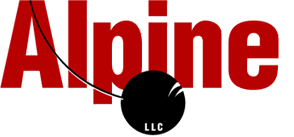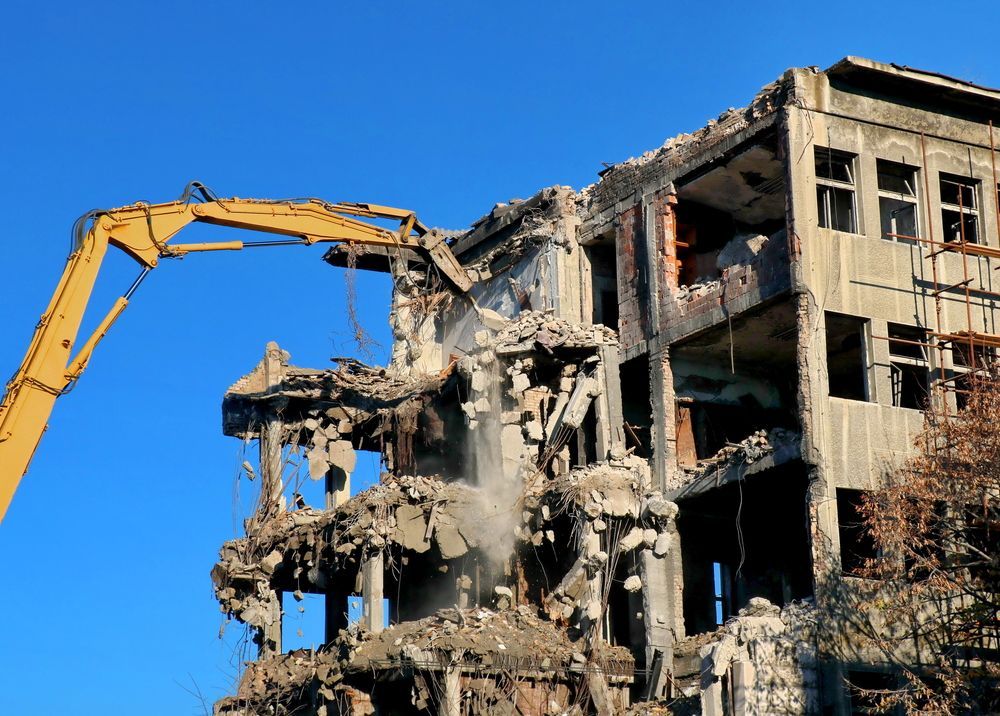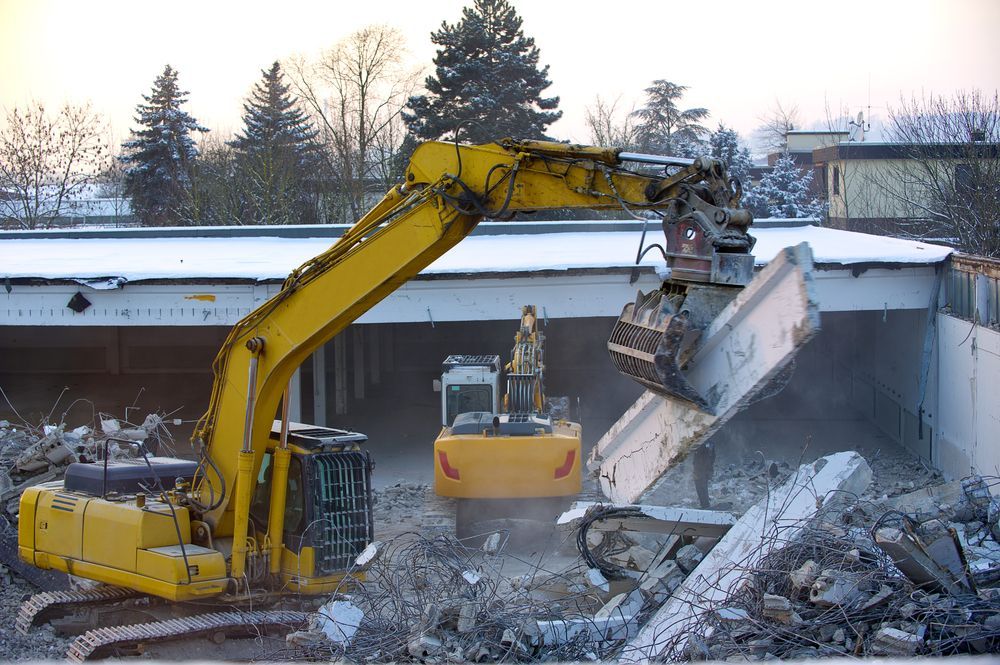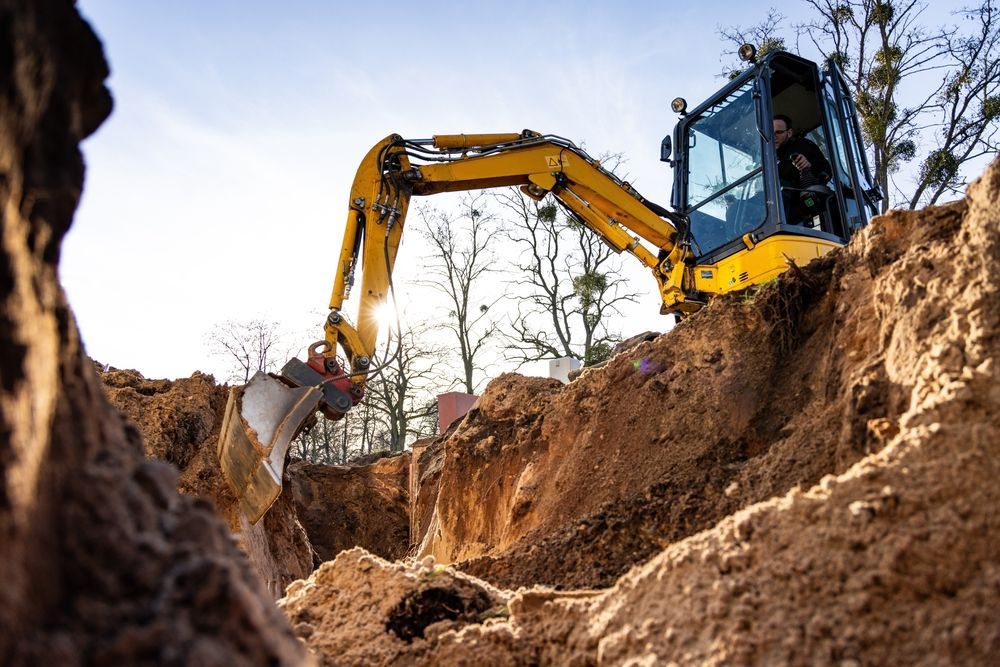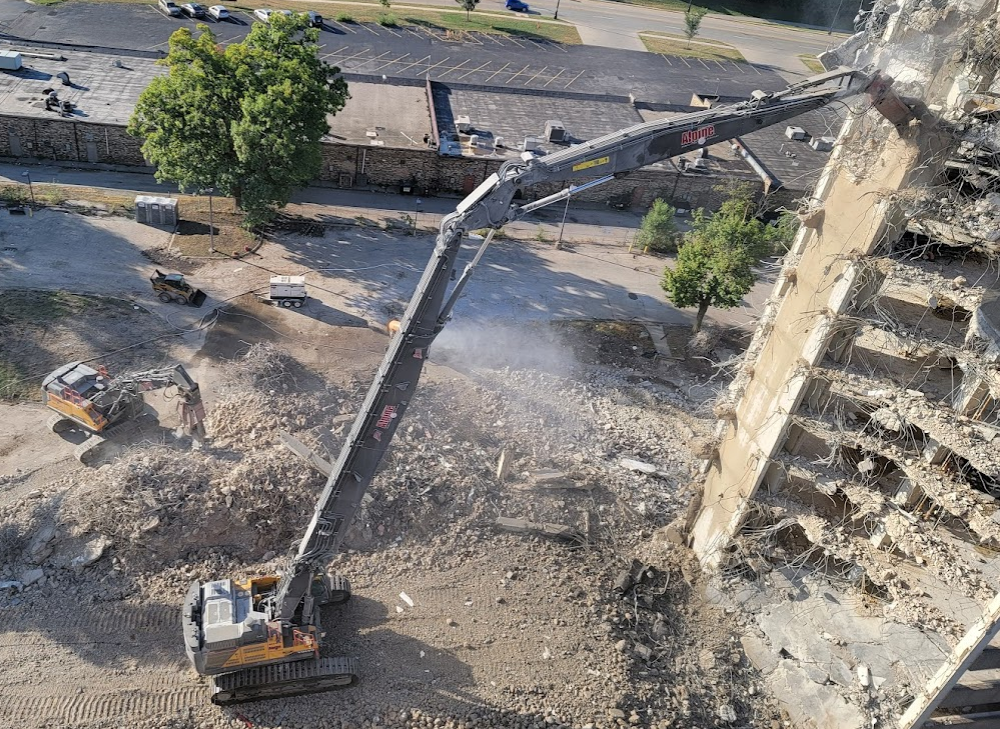
According to the Occupational Safety and Health Administration, demolition is defined as the dismantling, razing, destroying, or wrecking of any building or structure. Sometimes, demolition is out of necessity. Other times, it’s a choice made by developers and stakeholders to make way for a new and improved structure. Regardless of the reasoning behind any demolition, however, there is certain equipment that’s universally deployed on said projects. In this post, we’ll take a closer look at the types of demolition equipment that you’ll often find on commercial demolition sites and how each piece helps get the job done. Read on to learn more.
Types of Demolition Equipment on Commercial Job Sites
When many people think of commercial demolition, the planned implosion of stadiums and high-rises likely comes to mind. And while explosives are often strategically placed to help buildings come down, there’s a whole slew of materials and debris that need to be removed from the impact site after the dust has cleared. Depending on the type of demolition project, you may see all of these equipment types on-site at a time or just a few. Here’s a look at some of the most common pieces of equipment that you’ll find on such sites putting in the work after buildings come down:
Excavators
There’s perhaps no one single piece of equipment more synonymous with demolition than excavators. Excavators come in various sizes, making it easy to select the appropriate one for your project. Consisting of a boom and bucket, the cab sits on a rotating platform, permitting a full 360-degree range of motion. They also move easily via either tracks or wheels when it’s time to venture to another part of the site. One of the biggest advantages of excavators is their flexibility. While the claw may be the most common boom attachment, other attachments include hammers, grapples, and buckets.
For a small demolition project where an implosion isn’t necessary, excavators are often used to take down the building. On larger projects, they’re typically used in tandem with dump trucks or material handling equipment to clear out debris.
Wheel Loaders
Wheel loaders are similar to bulldozers, except they often have a much larger, more versatile front bucket. This makes it easier to load materials into dump trucks or other vehicles for disposal. Like much of the equipment on this list, wheel loaders come in all different sizes, making it easy to find the one that’s best suited for any demolition project.
Cranes
Cranes are most synonymous with lifting steel columns and beams to ironworkers on new construction buildings, but they can also come in handy on a demolition site as well. For example, cranes can attach wrecking balls to the boom, which can then be elevated on higher commercial developments and used to take down buildings at elevated heights. One of the nice things about using cranes for demolition purposes is their range of motion.
Dump Trucks
Materials and debris on any demolition project need to eventually be transported to either the recycling facility or landfill after the dust clears. And while roughly 85 percent of a demolished structure can be recycled or reused in some way, it still needs a method for getting off-site so developers can begin building again on the land. Dump trucks are able to offer that solution. The likes of wheel loaders, backhoe loaders, and other equipment are able to literally pull right up to the dump trucks and unload their debris right into them. Once the dump trucks are full, they can drive off-site to either the landfill or the recycling area. Some dump trucks are up to 50 feet in length and can carry several tons of materials and debris. Many larger demolition sites work to have a streamlined system, where multiple dump trucks are always on-site and loaded with debris to keep progress steady.
Selective Demolition Tools
Many commercial properties undergo complete demolition to make way for new developments. However, in some cases,
selective demolition may be necessary. Selective, or partial, demolition is most often associated with interior demolition, commonly done when a property owner wants a new fit-out or to redesign a certain floor or space. Being that you can’t exactly get a bulldozer, backhoe loader, or wheel loader up stairs or through a door wall, hand tools are commonly used for such purposes. Some of the most popular hand tools used in selective demolitions include:
- Sledgehammers
- Sawzalls
- Ripping bars
- Framing hammers
- Oscillating multi-tools
Typically, selective demolitions are planned out so that there’s always a path to move materials out of the building. This is often done with wheelbarrows.
Contact Alpine Demolition Services, LLC Today
For more information on the equipment that would work best on your demolition project,
contact Alpine Demolition Services, LLC today. As a leader in demolition services, no project is too complex for our trained, certified professionals. With more than 1,500 completed demolition projects and a proven track record of success and safe working practices, we’re standing by and ready to plan and perform your next demolition. Contact us today for more information.
3515 Stern Ave, St. Charles, IL 60174
(630) 761-0700
Office Hours
Mon - Fri: 8:00 am - 4:30 pm
Sat - Sun: Closed
Website imagined and executed by RivalMind.
Quick Links
Stay Connected with Alpine:
Sign-up to receive regular news updates from Alpine Demolition.
Newsletter Email
We will get back to you as soon as possible.
Please try again later.

